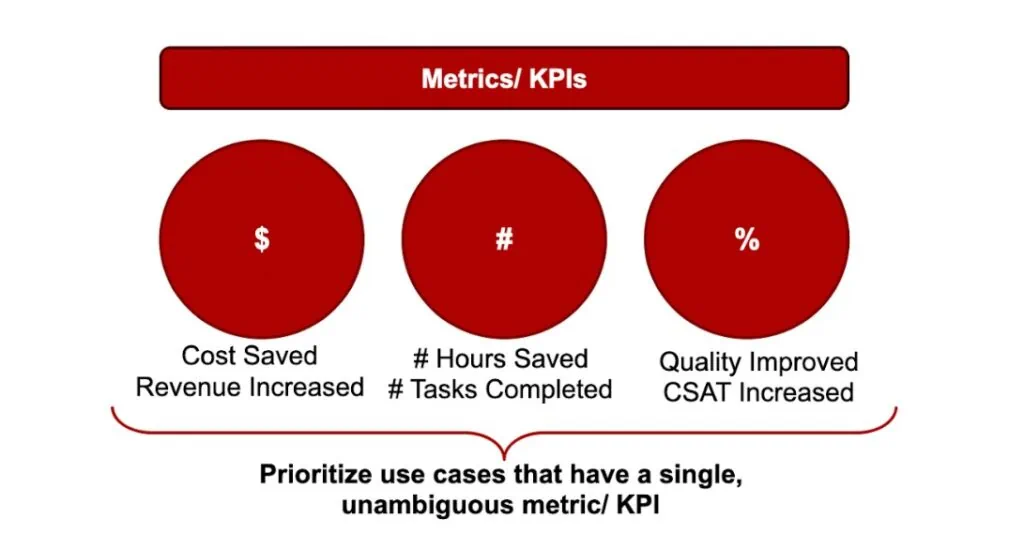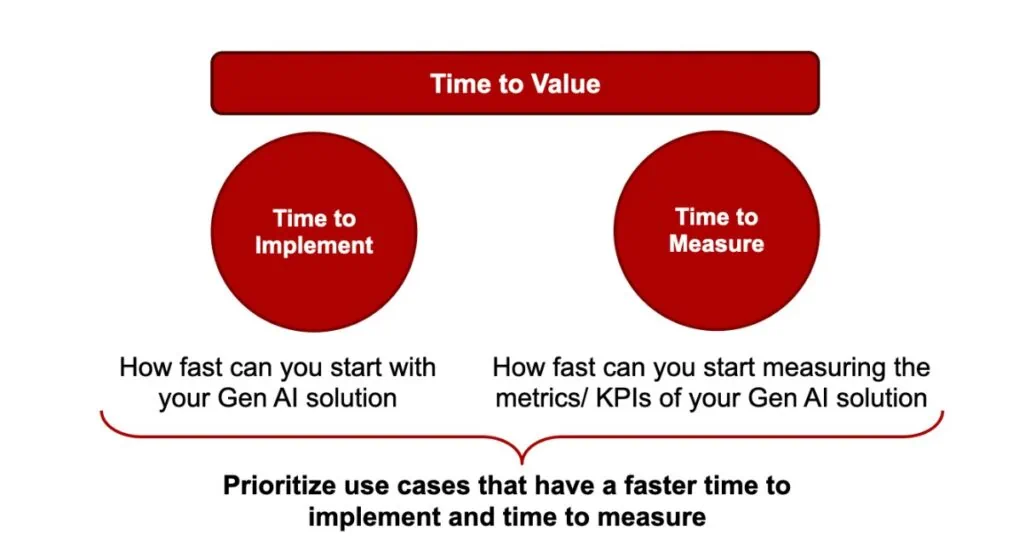
In the rapidly evolving world of Generative AI (Gen AI), understanding and prioritizing your return on investments (ROI) is essential. There are two main ROI components: your metrics or Key Performance Indicators (KPIs), and the time to value. This post will delve into these components, providing clarity on how to maximize your Gen AI investments.
Understanding Metrics and KPIs
Metrics or KPIs are the benchmarks that help gauge the success of your Gen AI investments. They answer the critical question: what are the goals of your Gen AI initiatives? Identifying and setting clear KPIs is a vital first step in any Gen AI project. These KPIs could be in terms of dollars, units, or percentages, each representing a different aspect of success.

Dollars: Cost Savings and Revenue Increases
When measured in dollars, KPIs could look like cost savings or increased revenue. For instance, achieving a cost reduction of $90,000 in a month or boosting top-line revenue by $300,000 in a quarter are quantifiable dollar-based KPIs. These figures provide clear financial benchmarks to measure the impact of your Gen AI initiatives.
Units: Hours Saved and Tasks Completed
Unit-based KPIs could include metrics such as the number of hours saved per week for a project manager or the number of additional tasks completed by the business operations team in a cycle. These metrics offer insight into efficiency gains and productivity improvements.
Percentages: Quality Improvement and Customer Satisfaction
Percentage-based KPIs might involve improvements in quality or customer satisfaction scores. For example, a 12% increase in product quality or an 18% rise in Net Promoter Scores (NPS) quarter over quarter. These KPIs help in assessing the qualitative improvements brought about by Gen AI.
The Importance of Clear and Unambiguous Metrics
It’s crucial to identify a single, unambiguous metric or KPI for each Gen AI use case. This metric should be determined before the implementation of Gen AI, not during or after. Ambiguity in KPIs can lead to a lack of clarity in assessing the success and value of your AI initiatives, potentially resulting in lost support or momentum.
Time to Value: Implementing and Measuring
The second component of ROI is ‘time to value’, which covers the ‘when’ aspect. This includes both the time to implement the Gen AI solution and the time to measure its effectiveness.

Time to Implement
‘Time to implement’ refers to how quickly you can start using the Gen AI solution. For example, if it takes four weeks to start using a solution, this timeframe becomes a crucial part of your ROI calculation. The quicker a solution can be implemented, the sooner you can begin to realize its benefits.
Time to Measure
‘Time to measure’ is about how swiftly you can start measuring the KPIs of your Gen AI solution. For instance, if early results from a solution can be gauged six weeks after implementation, this gives you a timeline for expecting tangible outcomes. Prioritizing use cases with faster times to implement and measure is beneficial because it allows for quicker feedback and data collection, essential for agile decision-making and continuous improvement.
Prioritizing Use Cases for Maximum ROI
When prioritizing use cases for Gen AI, focus on those with clearly defined, measurable KPIs and shorter times to value. This approach ensures that your investments are aligned with tangible outcomes and provide quick feedback loops for ongoing optimization. Use cases that take days rather than months to implement and measure should be given precedence, as they allow for more rapid assessment and adjustment.
IIf you’d like to learn more, check out my “Generative AI for Business Leaders” course on Udemy or my “Generative AI for Busy Business Leaders” book on Amazon.
